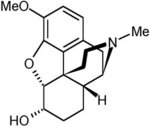DRUG addicts are more likely to try to kick their habit if they are offered a greater choice of treatments.
Dr Malcolm Bruce, a consultant psychiatrist based in Edinburgh, claims new research shows that it is easier to retain patients in treatment if they are offered different options.
He said that, while the focus in Scotland is on methadone, alternatives to the heroin substitute should be more widely used.
Last week, statistics highlighted that prescriptions of methadone have risen by 17-per cent in two years. There are now 19,000 Scots dependent on it.
Bruce, of the Royal Edinburgh Hospital, carried out the study, yet to be published, comparing dihydrocodeine, another opiate substitute, with methadone.
"We showed it to be just as effective, " he said. "But what did come out of the study was that if you gave patients a choice you are probably more likely to retain them in treatment."
He said the use of alternative drugs, such as buprenorphine, should now be considered.
Buprenorphine is widely used in England, continental Europe and Australia. Experts say addicts are less likely to overdose on it than methadone.
However, its use in Scotland has been limited after it was widely abused by addicts in the 1980s.
Bruce said: "In Scotland there tends to be a methadone focus in terms of substitute prescribing. [However] a lot of patients don't come to services that only offer methadone as they don't want methadone. But if you offered buprenorphine, dihydrocodeine or an injectable drug then they might come in."
Professor Neil McKeganey, director of the Centre for Drug Misuse Research at Glasgow University, agreed that a greater range of options should be offered. "The fact that nearly a third of Scotland's addict population - nearly 20,000 - are on methadone shows it is becoming the default treatment."
He said that the tendency was to provide methadone to stabilise addicts rather than to help them recover.
"Many people have a genuine anxiety . . . that it is really about controlling users' criminality."
However, McKeganey argued that more abstinence programmes were required, pointing to research which revealed that was what addicts wanted.
"We have to find ways of getting these people off drugs or we will simply see more of Scotland's young people dependent on medication provided by the state as opposed to dealers."
That is a view backed by Tory MSP Bill Aitken, who highlighted the methadone statistics last week. He said: "My fear is that people who are on methadone for a lengthy period become conditioned to it and there is no way out for them.
"One is led to the conclusion that the Scottish Executive is content to see addicts who are offenders sit dumb and happy and not committing further offences because they are on methadone. This may help the crime figures; it certainly does not help the individual."
Alistair Ramsay, of Scotland Against Drugs, said in an "ideal world" there would be a wider list of options for addicts.
But he added: "Methadone is the most agreed method of treating people who want to come off heroin. Until there is similar agreement about a more effective treatment then it is likely to remain."
A spokesman for the Executive claimed the increase in prescriptions for methadone reflected the fact that more drug users are getting into treatment.
"Getting people into effective treatment can reduce the use of illegal drugs and reduce offending. That is why we are expanding all types of treatment, not just methadone, " he added.
Copyright 2005 SMG Sunday Newspapers Ltd.
Provided by ProQuest Information and Learning Company. All rights Reserved.



